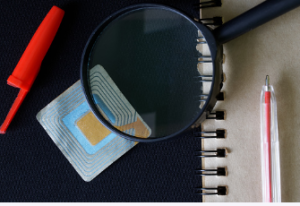If you are looking for a new and efficient way to track inventory or assets, you may consider using radio frequency identification (RFID). RFID tracking technology effectively identifies and tracks objects using electromagnetic fields to scan tags attached.
RFID tags have a unique identity
 RFID (Radio Frequency Identification) is a technology that uses small electronic devices to capture and store information. It is also used to track and manage products. For instance, it can be used to prevent theft and shrinkage. There are many kinds of tags, each with its unique identity.
RFID (Radio Frequency Identification) is a technology that uses small electronic devices to capture and store information. It is also used to track and manage products. For instance, it can be used to prevent theft and shrinkage. There are many kinds of tags, each with its unique identity.
The tag can be affixed to a product or embedded in an object. Labels can be read from a distance with the help of a reader. The title can sometimes be deactivated by physically tearing away its antenna.
RFID tags are available in different sizes and shapes. Depending on the need, organisations can choose a particular form factor. Some are keyfobs, and others are integrated into a plastic cover.
When an RFID tag is in range of an RFID reader, a radio signal is sent to the tag. The tag then responds with data, which is then transmitted to an access control system.
RFID tags are more durable than barcodes
RFID tags are a standard technology that has been around for decades. They are used to track and protect products. It can include medical supplies, medications, livestock, and more. Compared to barcodes, they are more durable and have higher levels of security.
RFID is often considered the best option for inventory tracking. The system has several benefits, including reading data and updates remotely. It also has a faster speed than barcodes.
However, there are some disadvantages to using RFID. One of the most significant issues is the cost. Using RFID tracking requires a much more substantial investment than a barcode. RFID is also not as durable as barcodes. If you have an item with a lot of grease or dirt, it may not be readable. Some RFIDs can be tampered with, which is not a problem with barcodes.
Barcodes are more universally accepted. For example, they are commonly used in retail settings. However, they are expensive and are more susceptible to damage.
RFID tags automate the process of collecting data
RFID tags are tiny electronic devices that can track items or people. They can also be used to trigger events in a business process. For example, if an RFID tag is attached to a product, it could start the opening of a packaging machine. It can reduce the need for manual intervention.
The main advantage of RFID is that it can be used for a wide variety of applications. It’s a great way to improve safety and increase efficiency. However, there are some downsides to technology. Some of the most important are signal issues, such as collisions, interference, and magnetic fields.
There are two types of RFID tags, active and passive. Active tags are more expensive and are powered by a battery. They are typically smaller than passive ones, but they offer more range.
On the other hand, passive tags are not powered by a battery. Instead, they use the energy from a reader to turn them on. These are usually small and are packaged in a variety of ways.
RFID systems are foundational for today’s omnichannel retailers
As the omnichannel shopping experience rapidly evolves, retailers are investing in RFID systems to enhance inventory accuracy. The technology provides accurate information about products and keeps supply chains running efficiently.
Retailers are also looking to improve customer experience. An omnichannel shopping experience provides shoppers with an easy way to shop online and in-store. They also want to be able to text or call with questions.
To deliver a good customer experience, retailers must ensure that inventory is up-to-date. RFID is a reliable method to do this. It allows stores to track items accurately, keeping them in stock and helping to build a case against a shoplifter.
Using iD Cloud, retailers can increase their inventory accuracy, increasing product availability in their stores. As a result, customers can purchase products faster and more efficiently. Plus, employees can focus on sales instead of managing inventory.
With iD Cloud, retailers can easily monitor their stock and inventory accuracy, making optimising their operations more straightforward. For instance, a store can use the app to identify a customer and automatically offer an item substitute.